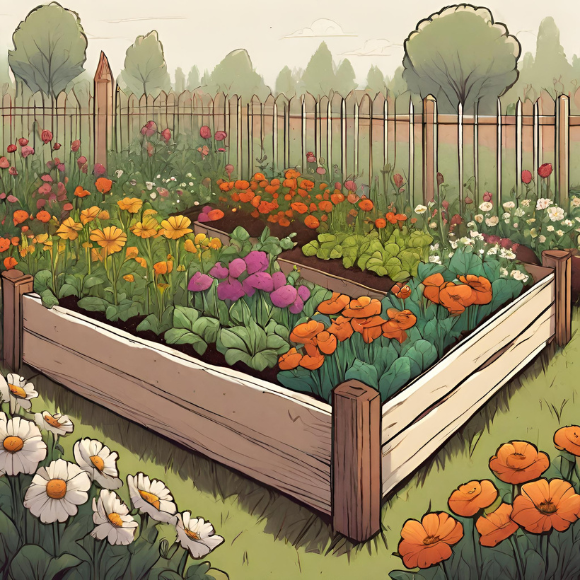
Now that you understand the basics of raised bed gardening, it’s time to get your hands dirty! In this chapter, we’ll guide you through the process of constructing your very own raised garden bed.
GATHERING YOUR MATERIALS
Before you start building, you’ll need to gather all your materials. Here’s a basic list of what you’ll need for a simple 4ft x 8ft wooden raised bed:
- Four wooden boards: Two 4ft long and two 8ft long. We recommend using untreated cedar or redwood for their longevity and resistance to decay.
- Eight pieces of 2×2 lumber cut to your desired bed height for corner and mid-supports.
- A box of wood screws (3 inches long).
- A power drill.
- A level.
- A tape measure.
- A staple gun and landscape fabric (optional).
ASSEMBLING YOUR RAISED BED
Once you have all your materials, follow these steps to construct your raised bed:
- Lay two of your 2×2 corner supports on the ground roughly 8ft apart. Position your 8ft long boards on top of these supports, aligning the ends of the boards with the supports.
- Pre-drill two holes at each end of the 8ft board into the 2×2 supports, then secure with screws. Repeat this process on the other side of the bed.
- Position the remaining 2×2 supports at the midpoint of your 8ft boards for additional support. Attach these supports using the same method.
- Attach your 4ft boards to the remaining ends of the corner supports to complete the bed frame.
- Use the level to ensure all sides of the bed are even. If necessary, adjust the ground beneath the bed until the frame is level.
PREPARING YOUR RAISED BED FOR PLANTING
Once your bed is assembled, there are a few more steps before you can start planting:
- If your bed is placed over a lawn or weedy area, line the bottom of the bed with cardboard or several layers of newspaper to suppress the growth of unwanted plants.
- Optionally, you may choose to line the interior sides of the bed with landscape fabric. This can help to protect the wood from moisture and extend its life. Secure the fabric to the sides using a staple gun, making sure to trim any excess fabric.
- Fill your bed with a mix of topsoil, compost, and other organic matter to create a nutrient-rich environment for your plants.
- Finally, water the soil thoroughly before planting.
By following these steps, you’ll have a well-constructed raised bed ready for planting. In the next chapter, we’ll delve into planning your garden and choosing the best plants for your raised bed.


 Previous
Previous


I built three tall raised garden beds and used the process of hugelkulture to fill them— logs on the bottom, then sticks, then yard vegetation, and finally garden soil. It’s a lot less expensive and environmentally friendly.